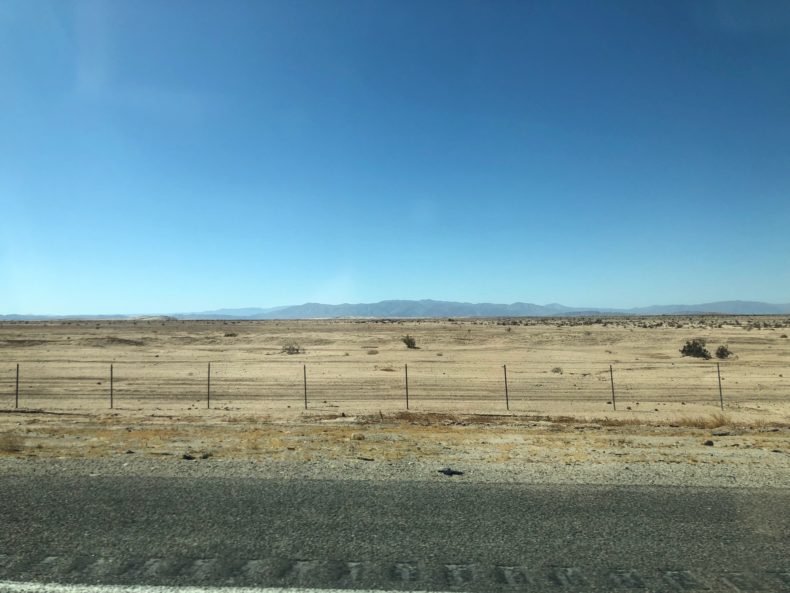
A couple of months ago, my husband and I drove into the Sonoran desert. We were in pursuit of the weird, heading for a mountain celebrating God’s love and constructed almost entirely out of latex paint. We left Palm Springs and drove south toward the Salton Sea.
The scenery was exactly what I expected: beige, dry earth with a sparse smattering of stunted vegetation. Then, just past the southern tip of Salton Sea, Google ordered us off the highway and onto gravel. Suddenly we were in the midst of farm fields. Many had just been tilled, but some had already sprouted. After miles of tan, the verdant carpet of seedlings seemed almost garish.
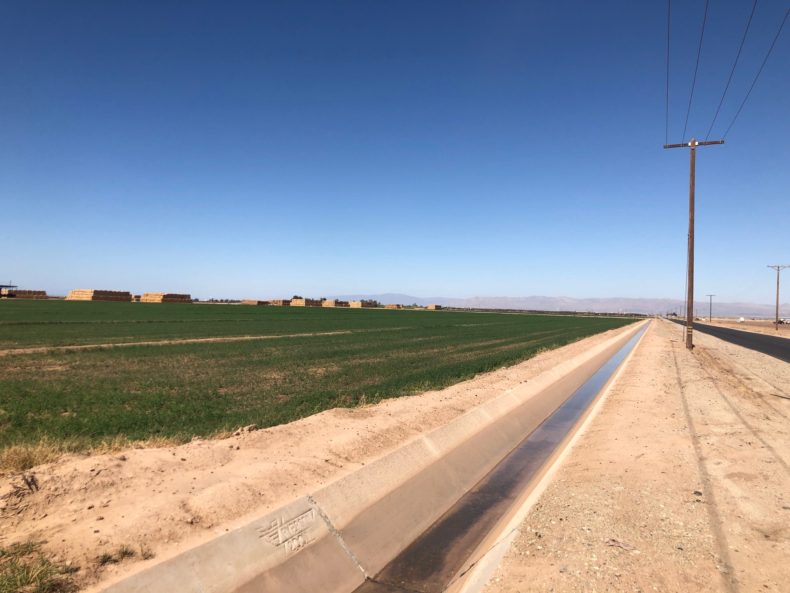
Crops in the desert. The notion seemed preposterous. Even my four-year-old knows that plants need water. The desert has next to none.
I didn’t know it at the time, but we had inadvertently stumbled onto the nearly half a million acres of farmland that make Imperial Valley one of the nation’s top vegetable producers.
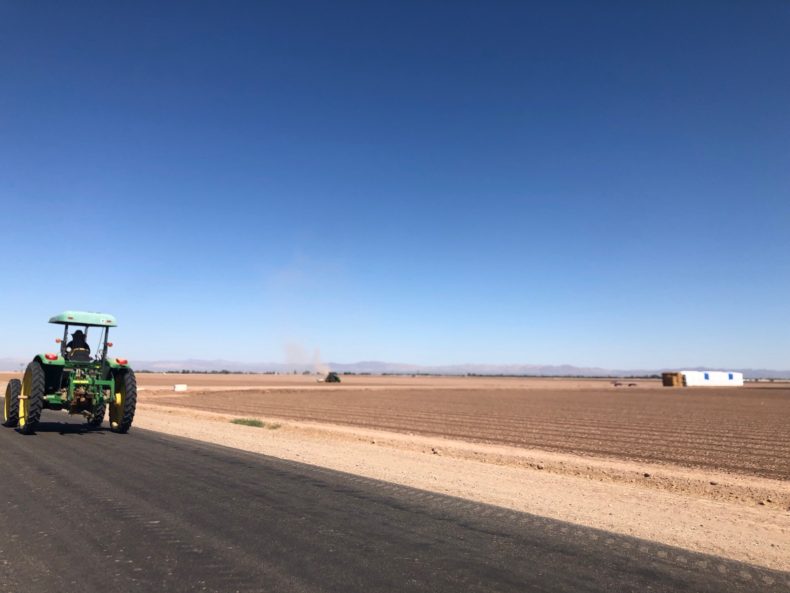
The valley’s booming (and lucrative) agriculture industry is thanks to an irrigation system that brings in water from the Colorado River. Imperial Valley is the largest single consumer. Today the valley uses 2.6-million-acre-feet, nearly 85% of its 3.1-million-acre-feet entitlement, and sells much of the rest to urban areas in southern California. (Mexico gets just 1.5-million-acre feet a year.) That may seem, well, crazypants. But there’s a semi-logical explanation: The river got divvied up on a first come, first served basis. And the farmers of Imperial Valley staked the first claim.
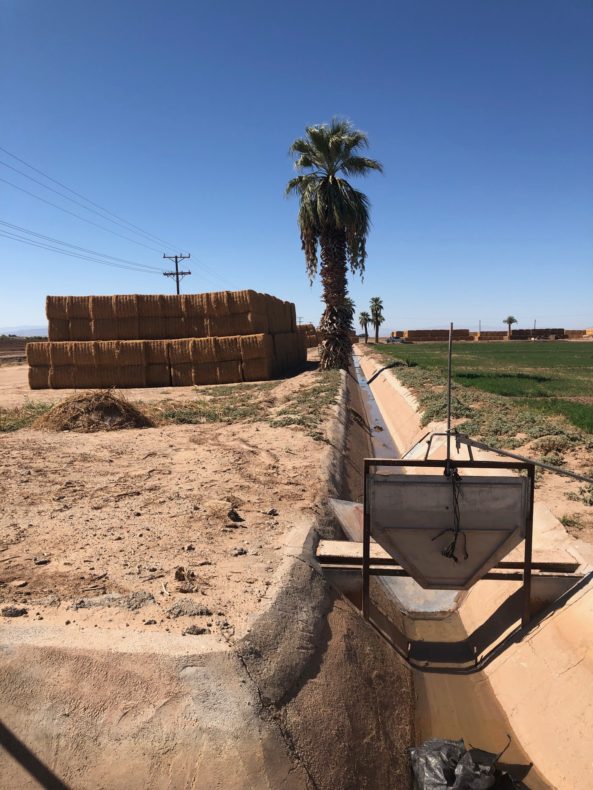
Much of the valley’s water goes to grow plants, but some also helps grow cattle. “What? Cows in the desert?!” you say. Why, yes. I wouldn’t have believed it either had I not seen them with my own eyes. Row after row after row after row of Holsteins standing in 95-degree heat under the partial shade of a slatted canopy. The beef producer’s web site emphasizes that the company is committed to sustainability. But it’s hard to see how using water diverted from a dwindling river to raise cattle packed together in the hot desert sun could be sustainable.
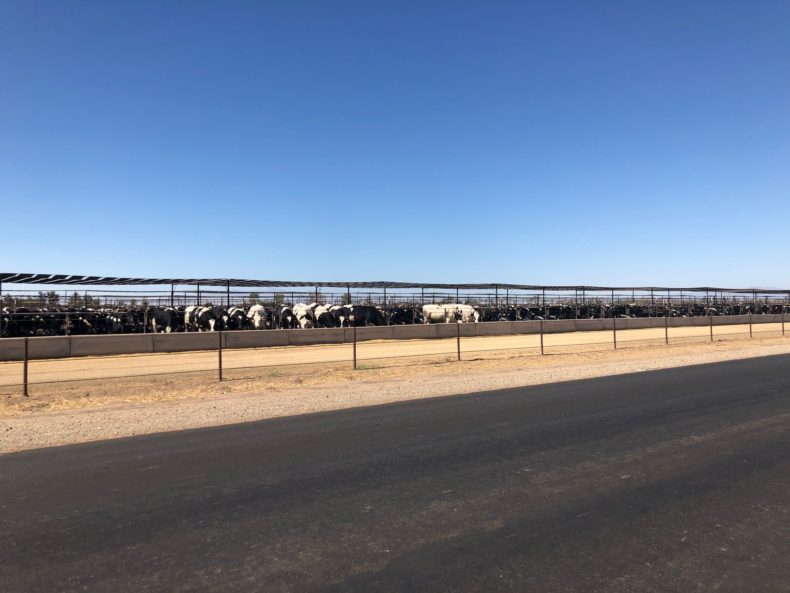
The massive withdrawals from the Colorado aren’t sustainable either. According to a Yale360 story by Jim Robbins, the original agreement struck in 1922 — the one that nailed down how much water would go to each state — overestimated the river’s flow. What’s more, the river has been dwindling in recent years thanks to a 19-year drought. Earlier this year, Lake Mead, one of the reservoirs that California depends on, dropped to levels not seen since the 1960s. Officials feared that the water level would drop so low Hoover Dam would no longer be able to generate electricity. “Many water managers like me are struggling at not panicking,” the general manager of the Grand Valley Water User’s Association in Grand Junction, Colorado, told Robbins.
Even the states that rely on the Colorado River recognize that they must make sacrifices. In March, seven states struck an agreement to voluntarily cut their water consumption, a stopgap measure aimed at averting a near-term water crisis.
But, notably, that deal did not include the irrigation district that controls the Imperial Valley’s water. California cut the district out of the plan after they demanded $200 million to deal with environmental problems related to the Salton Sea. As a result, the agreement does not force Imperial Valley to cut its water consumption.
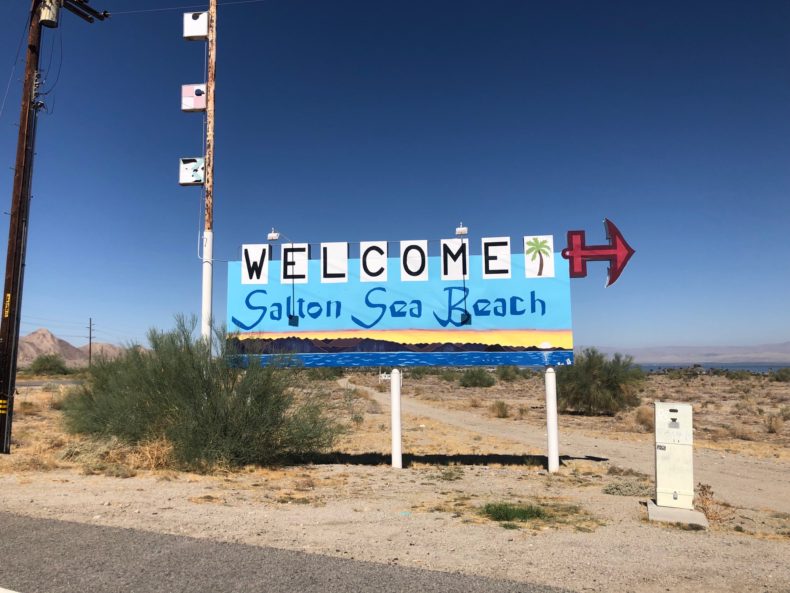
Imperial Valley farmers have a long history of fighting to keep their water. But as the water wars in the southwest intensify, and climate change shrinks the Colorado River even further, something has to give. Forty million people depend on the Colorado’s dwindling water supply. We need to make smart, strategic decisions. First come, first served might have worked in the 1900s, when the nation possessed seemingly unlimited natural resources. Today we need a better strategy.
***
Photos by Cassandra Willyard
This story originally suggested that Imperial Valley uses all the water it is allotted. I have updated it to reflect the correction provided in the comments.
Not to mention that the Salton Sea, though large in surface area (> 340 sq miles), is a relatively new lake (1905) and people around here fight to keep it in existence like it’s been here through the ages. Why people want to keep this briny around, I’m never quite sure.
Uff. Not surprisingly, it’s complicated, Dr. D. The Salton Sea is an environmental disaster. The more it shrinks, the more lake bed is exposed. And the lake bed holds decades of accumulated industrial runoff — a toxic mix of arsenic, selenium, chromium, zinc, lead, and pesticides. The concern is that wind whipping across the now-dry earth will lift contaminated particles into the air and threaten public health. (This is a good article). In fact, that deal that John mentions exacerbated the problem. When Imperial Valley cut its water use, less water flowed into the Salton Sea and the lake began to shrink even faster.
The Imperial Irrigation District’s water use this year will be about 2.6 million acre feet. In other words, it has already reduced its water use since its peak in 2002 of 3.15 million acre feet. Imperial has already reduced its use by more than half a million acre feet below its historic claim. That’s by far the largest water use reduction of any Colorado River water user, enough conserved water to supply two Las Vegas’s.
The reduction was made as part of an agreement negotiated in the early 2000s among the federal government and other California water users. It certainly is correct to note Imperial’s history of fighting to preserve its water rights – there was a lot of conflict in the negotiations! But far from fighting to keep its 3.1maf, Imperial ultimately signed a deal to cut its water use.
Good to know, John. I know you follow this stuff closely, and thank you.
John, thanks for this important correction. But if I’m understanding the situation correctly, that 2003 deal didn’t actually reduce the Imperial Irrigation District allotment. Rather it arranged for the district to transfer some of its water to San Diego and Coachella Valley (in exchange for billions of dollars). And my limited research suggests that the district initially said no to the deal, and then only signed under intense pressure from the federal government, which threatened to cut supplies if the state couldn’t find ways to voluntarily cut water use.